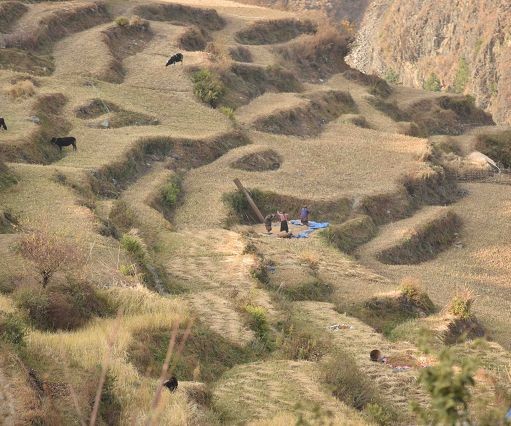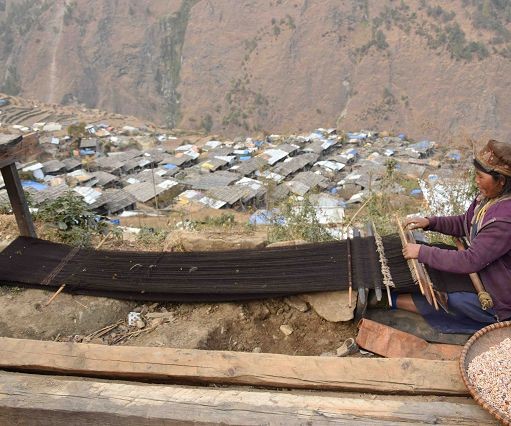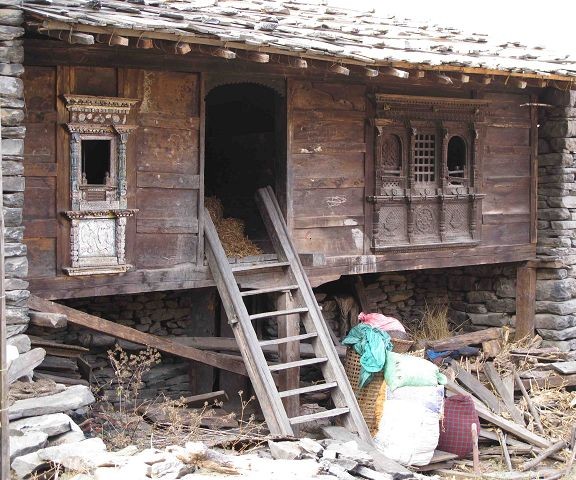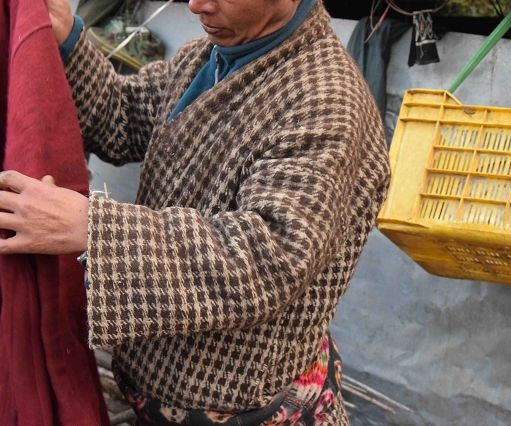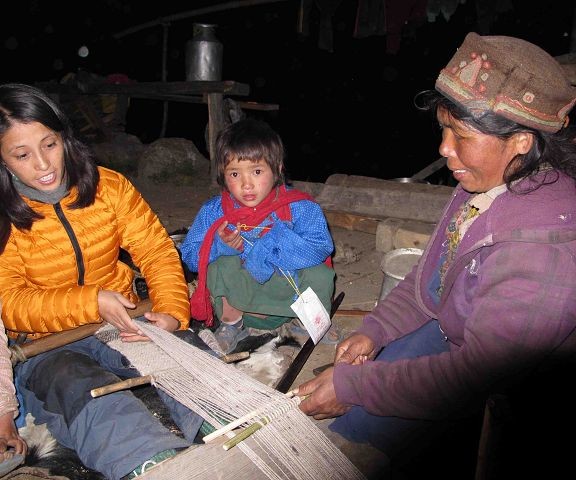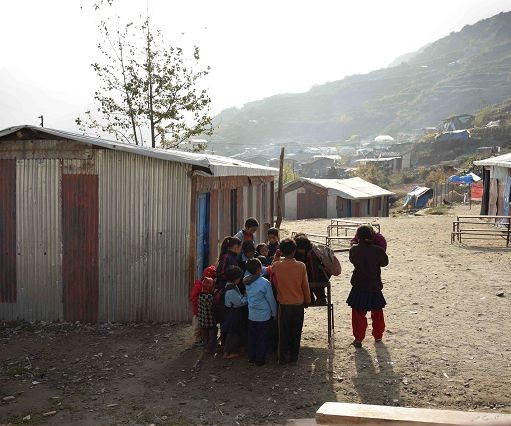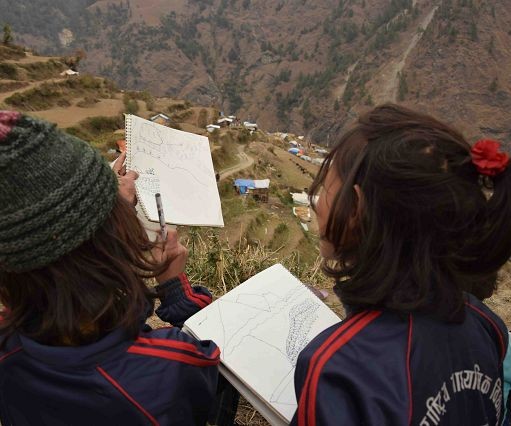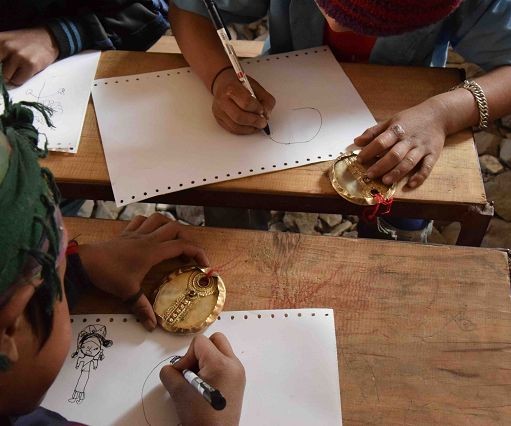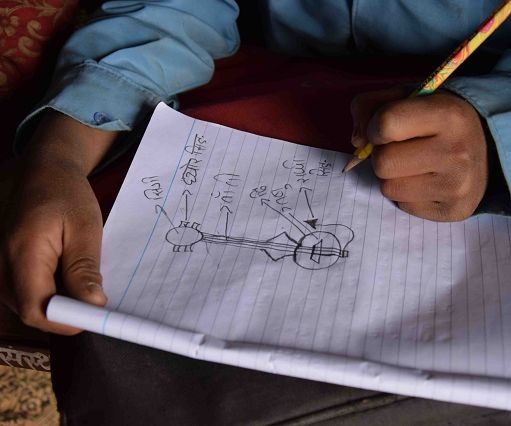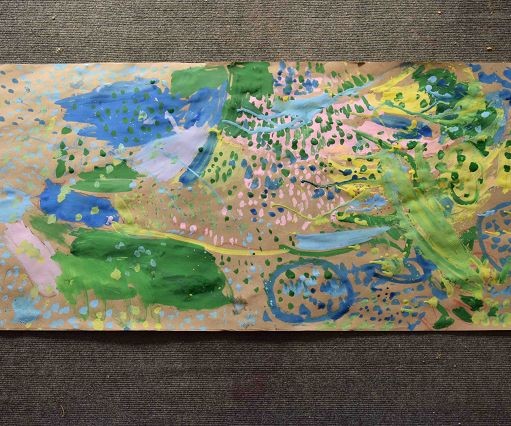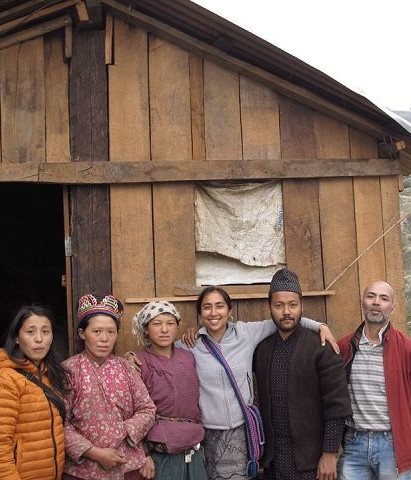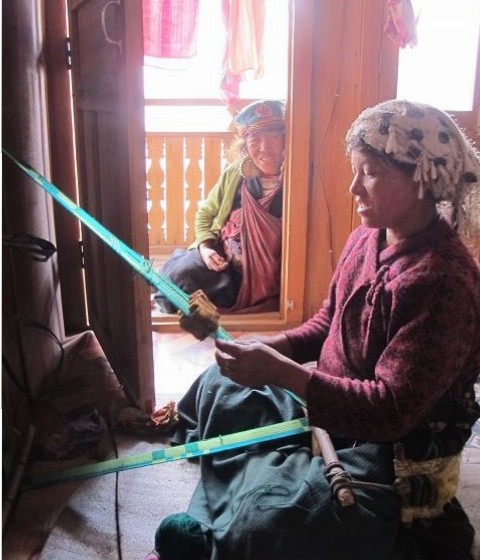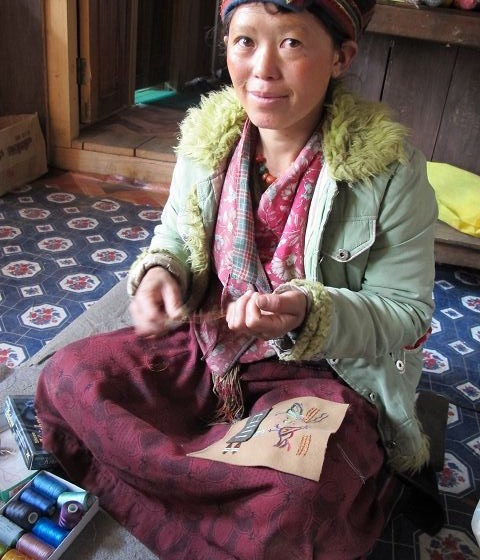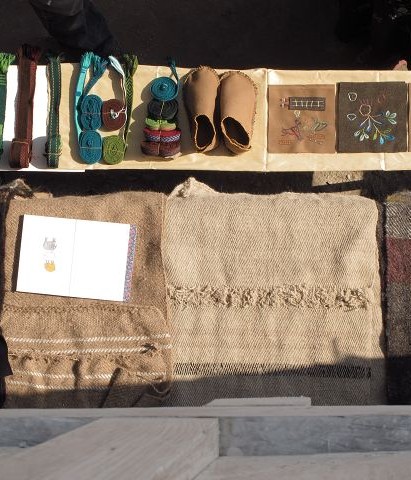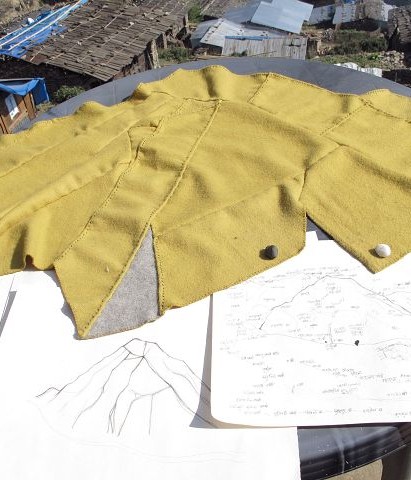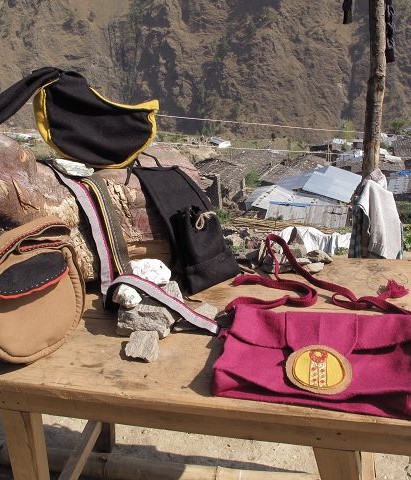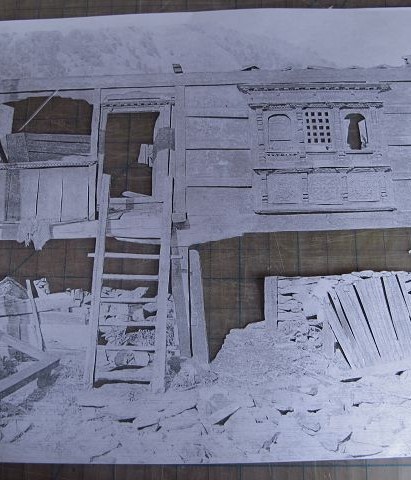The 7.8 magnitude earthquake on April 25, 2015 increased the vulnerability of the already marginalized Tamang communities in Rasuwa, a district north of the Kathmandu Valley. West of the Bhotekosi River, after a two-hour drive on a dirt road, Gatlang is the first stop on the Tamang Heritage Trail. It is known for its tight-knit web of houses with stone laid walls, carved wooden faces, and roofs made of wooden shingles. Infrastructure built over years—homes, the secondary school, cultural centre where people gathered, guest houses/home stays—have been destroyed in the earthquake. Over five hundred households have been displaced and people are now living in scattered tents on the outskirts of the village. While the earthquake has not triggered landslides in this pocket of the district, rebuilding the village will be a daunting task.
With the support of the SAI Nepal Help Initiative, Srijanalaya has been exploring weaving among Tamang women in Gatlang both as a creative livelihood and an education possibility. In the first phase of this project, which will last one month, weavers in Gatlang, two visual artists and a designer will experiment with traditional weaves and textiles to create an array of products and product ideas. This initiative will take the form of an artist residency. During the residency, an educator will build a curriculum around weaving that can be adopted in the local school, Nepal Rastriya Secondary School. The educator needs to build a strong relationship with the teachers, students, their families, the school administration, and weavers. This will begin a process of supporting the school in developing a locally relevant education that respects, values, and incorporates indigenous skills and knowledge. Since 2006, schools are required to develop and teach locally relevant curricula based on the National Curriculum Framework. Despite this opportunity for promoting local knowledge, schools have not been able to design such curricula, mainly due to lack of training and skills. In light of this new requirement, teachers from Nepal Rastriya Secondary School had informally requested Srijanalaya to support them in designing local curriculum.
Srijanalaya is a nonprofit, nongovernmental organization with a mission to create safe spaces of learning through the arts in Nepal.
Exploring Tamang Livelihood and Education Opportunities” by Sharareh Bajracharya, 19 April, 2016
After the quakes on April 25, 2015, the homes of all 534 households in Gatlang VDC, Rasuwa were destroyed. Gatlang village is now a maze of narrow alleys with looming carved wooden windows amidst the stone rubble. For 800 years, stones and wooden panels were used to create shelters from the wind, rain, snow, hail, and cold; however, in the earthquake, they became a source of danger. Some of people’s trust in their age-old knowledge has been shaken. Temporary shelters are scattered around the surrounding fields and livestock sheds. People are waiting to gather enough money and wait for an agreement on what kinds of homes to build.
It has been two weeks since our team of artists came back to Kathmandu and bid our artisan friends in Gatlang goodbye. It was so important for us to see that amidst the destruction and layers of despair, life continues. Located in the hills between the Tibet Autonomous Region and the Trisuli River, this majority Tamang people of Gatlang maintains a knowledge of this place and how to survive. Labor around agriculture, herding, and weaving is ingrained in their way of life. In fact, it is only within the past six or seven years that a motorable road was built through the village. Shades of green, brown, and yellow terraces are evidence of the continued potato and millet farming. Inbetween fallow land, a few of us joined in gathering a special herb (gampadap) to make fermented gundhruk.
From 6 March to 6 April, two artisans from Gatlang—Mendo Tamang and Tar Jhyalmo Ghale Tamang—worked with two visual artists, a designer, and an educator from Kathmandu. Both Mendo and Tar Jhyalmo have lost their homes to the earthquake and are making the best of their situation through their art. While taking care of her crops, Mendo weaves and dyes the local sheep wool cloth. Tar Jhyalmo embroiders and sews the traditional Tamang hats. They were recommended by the Paldor Cultural Group for both their crafts as well as due to their need for an income. Sunita Maharjan and Sanjeep Maharjan were the visual artists, Kirti Man Shakya the designer, and Sharareh Bajracharya the educator.
For one month the team engaged in a creative process to produce artworks and products that represent and are inspired by this place and its people. The process of producing creative pieces has led us to a wealth of knowledge and stories held in this Tamang community.
Artisans Mendo and Tar Jhyalmo experimented with the traditional weaving and embroidery techniques they have mastered over the years. Visual artist Sunita printed and stitched compositions of the silent surfaces left of people’s homes after the earthquake. Visual artist Sanjeep explored the weaves, stitches, and origami-like pieces from the overcoats called Shyoldo, and began a series of illustrations on the process. Designer Kirti Man explored the possibilities of the cloth and produced designs for up to four bags. Educator and Coordinator Sharareh Bajracharya communicated the creative process of the residency with local people and did research on how such kinds of local knowledge could be incorporated into the school curricula.
We ended the one month with a small exhibition where we invited interested people in the community. There was a very positive response and an appreciation of needing to find a market for raw materials and products that can be made in Gatlang. If we could create a need, they are interested in creating a committee where Mendo and Tar Jhyalmo would take the lead for production.
Srijanalaya now has a body of cloth and designs to create concrete samples and assess the market. We also plan to work more closely with the school in Gatlang.
We have additional images on a facebook site. https://www.facebook.com/srijanalaya/posts/552387501600447
https://www.facebook.com/media/set/?set=a.539339742905223.1073741853.334569210048945&type=3
